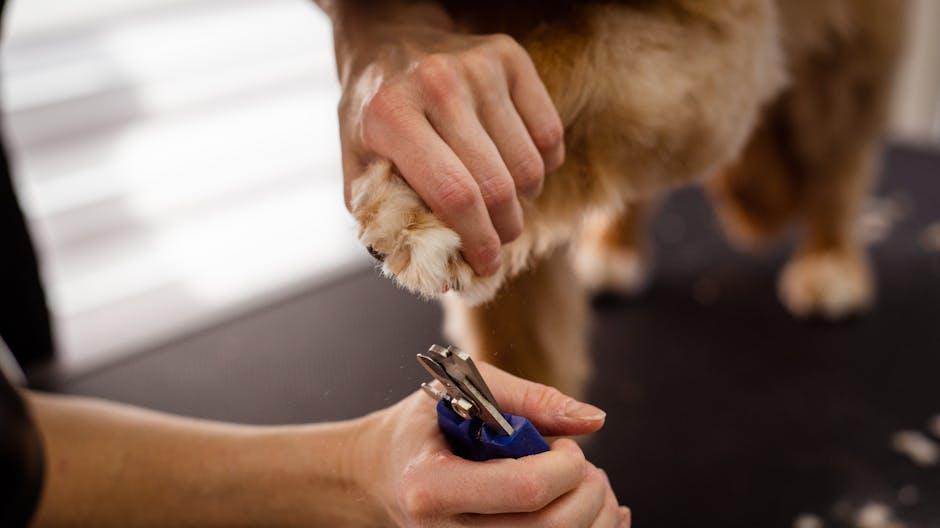Keeping your furry friend’s nails at a healthy length is an essential part of their overall well-being, yet it’s a task that many dog owners find daunting. Overgrown nails can lead to discomfort, affect your dog’s posture, and even cause long-term health issues. In this article, we will guide you through the process of managing your dog’s long nails with ease and confidence. Whether you’re a seasoned pet parent or a new dog owner, our step-by-step approach, infused with helpful tips and gentle encouragement, will ensure that nail trimming becomes a stress-free experience for both you and your beloved canine companion. Let’s embark on this journey together, ensuring your dog’s paws remain happy and healthy!
Understanding Your Dogs Nail Anatomy
To effectively manage your dog’s long nails, it’s essential to have a clear understanding of their unique nail anatomy. At the core of a dog’s nail is the quick, a sensitive area containing blood vessels and nerves. This part is crucial to avoid during trimming as it can cause pain and bleeding if cut. The outer part of the nail is made of a hard keratin shell, which provides protection and support.
Here’s what you should know about each component:
- Quick: The living tissue inside the nail. It is pink in color and can be seen through lighter nails, but is more challenging to spot in darker nails.
- Keratin Shell: The visible, hard part of the nail that can grow long and require trimming.
- Nail Bed: The area where the nail attaches to the toe, supporting nail growth.
Understanding these parts will help you trim your dog’s nails more confidently and avoid injury. Remember to always use a sharp, appropriate nail trimmer and trim in small increments.

Choosing the Right Tools for the Job
When it comes to managing your dog’s long nails, selecting the right tools is crucial for both efficiency and safety. There are a variety of tools available, each designed to suit different types of nails and personal preferences. Here are some essentials to consider:
- Nail Clippers: These come in several styles, including guillotine, scissors, and plier-style clippers. Guillotine clippers are ideal for smaller dogs, while plier-style clippers are better suited for larger breeds with thicker nails.
- Nail Grinders: If your dog is anxious around clippers, a nail grinder might be the solution. These tools file the nail down gradually, offering a gentler approach. Look for models with adjustable speeds for better control.
- Styptic Powder: Accidents happen, and if you clip too close to the quick, styptic powder can quickly stop the bleeding. Keep this handy to ensure a stress-free experience for both you and your pet.
Investing in quality tools not only makes the process smoother but also ensures your dog’s comfort and safety. Remember to regularly check the sharpness and cleanliness of your tools to maintain their effectiveness and prevent any potential injuries.

Step-by-Step Guide to Trimming with Confidence
Trimming your dog’s nails can be a daunting task, but with the right approach, you can handle it with ease and assurance. Begin by gathering the necessary tools: a pair of high-quality nail clippers, a file, and some styptic powder to stop any potential bleeding. Choose a quiet, comfortable space where your dog feels at ease, and make sure there’s ample lighting to see the quick clearly.
Here’s a simple approach to follow:
- Get Comfortable: Position your dog so they’re relaxed, whether sitting or lying down. Gently hold their paw and start with a light touch to help them get accustomed to the sensation.
- Identify the Quick: Look for the pinkish area inside the nail, which is the quick. It’s crucial to avoid cutting into this sensitive area.
- Trim Small Sections: Clip a little at a time, especially if your dog’s nails are dark and the quick isn’t visible. This gradual approach helps prevent accidents.
- Use Positive Reinforcement: Praise and reward your pup with treats throughout the process to keep the experience positive and stress-free.
- Finish with Filing: Use a nail file to smooth out any rough edges, ensuring a clean finish that won’t snag on surfaces.
With practice, patience, and these tips, you’ll soon find that trimming your dog’s nails can be a bonding experience rather than a chore.

Dealing with Common Nail Trimming Challenges
Trimming your dog’s nails can sometimes feel like a daunting task, especially when faced with common challenges. One frequent issue is anxious behavior from your pet. Dogs may squirm, pull away, or become stressed, making the process more difficult. To help ease their anxiety, consider the following tips:
- Introduce the clippers gradually: Allow your dog to sniff and explore the clippers before using them.
- Use treats and positive reinforcement: Reward your dog with treats and praise to create a positive association with nail trimming.
- Take breaks if needed: If your dog becomes too stressed, pause the session and try again later.
Another challenge is dealing with thick or dark nails, which can make it hard to see the quick—the sensitive part of the nail. To prevent cutting too short, consider using a nail grinder instead of clippers, as grinders allow for more controlled trimming. Additionally, trim in good lighting and take small amounts off at a time, checking frequently for a pale pink color to avoid hitting the quick. These strategies can help make nail trimming a smoother experience for both you and your furry friend.

